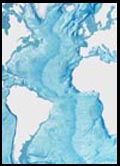
Main Directions of Marine Researches.
At: Laboratory of Geomorphology and Ocean Floor Tectonicsof Geological Institute, Russian Academy of Sciences.
Back to Main Directions "Language" Selection Page
Back to Main Page
 |
Main Directions of Marine Researches.At: Laboratory of Geomorphology and Ocean Floor Tectonicsof Geological Institute, Russian Academy of Sciences. Back to Main Directions "Language" Selection Page Back to Main Page |